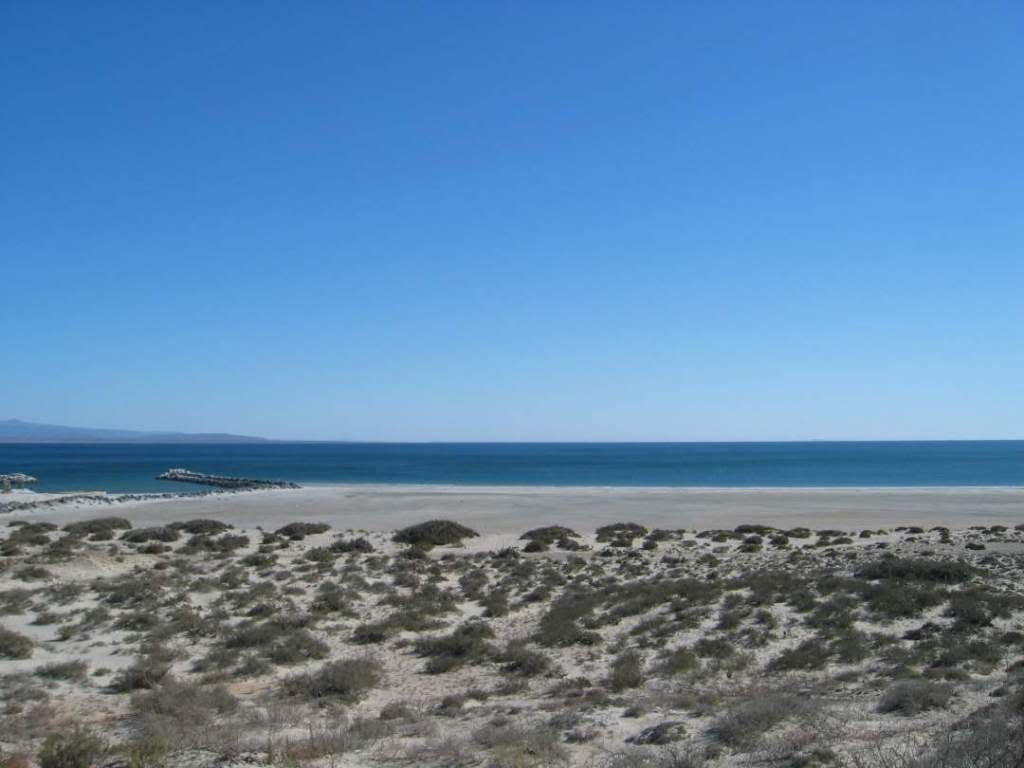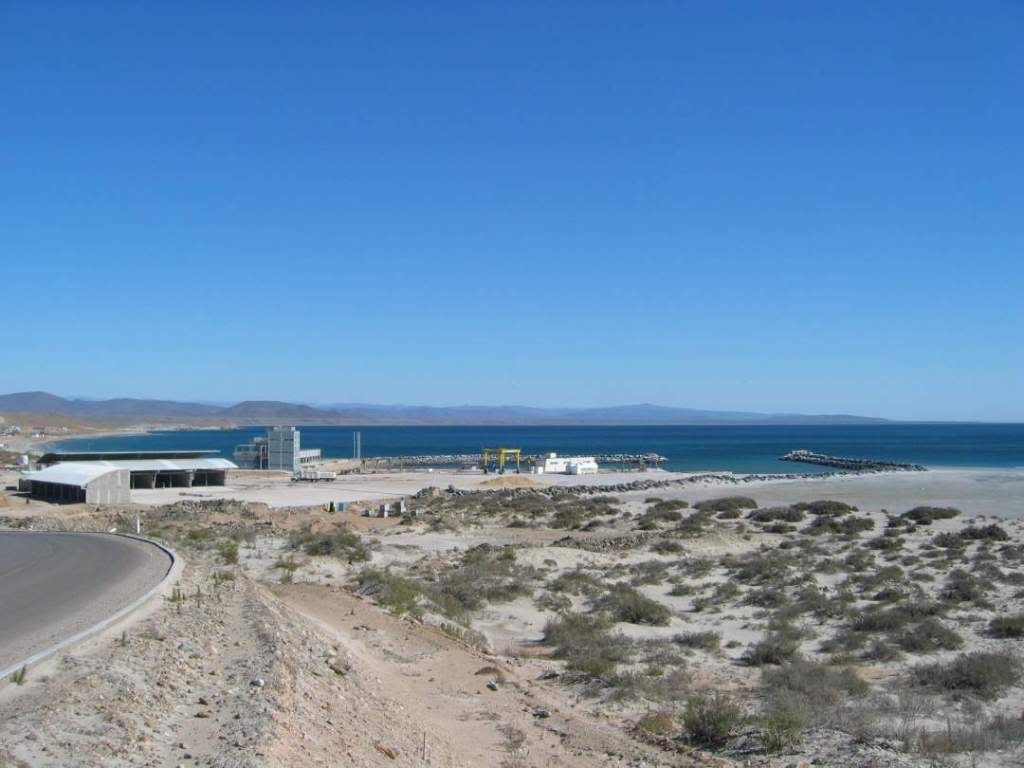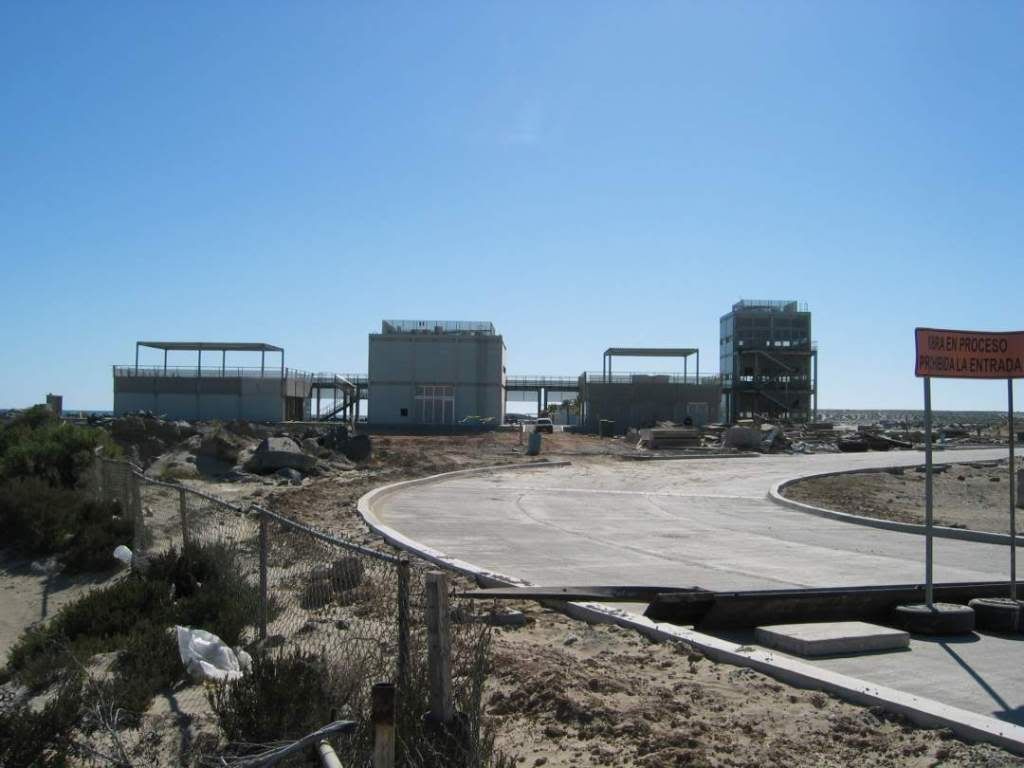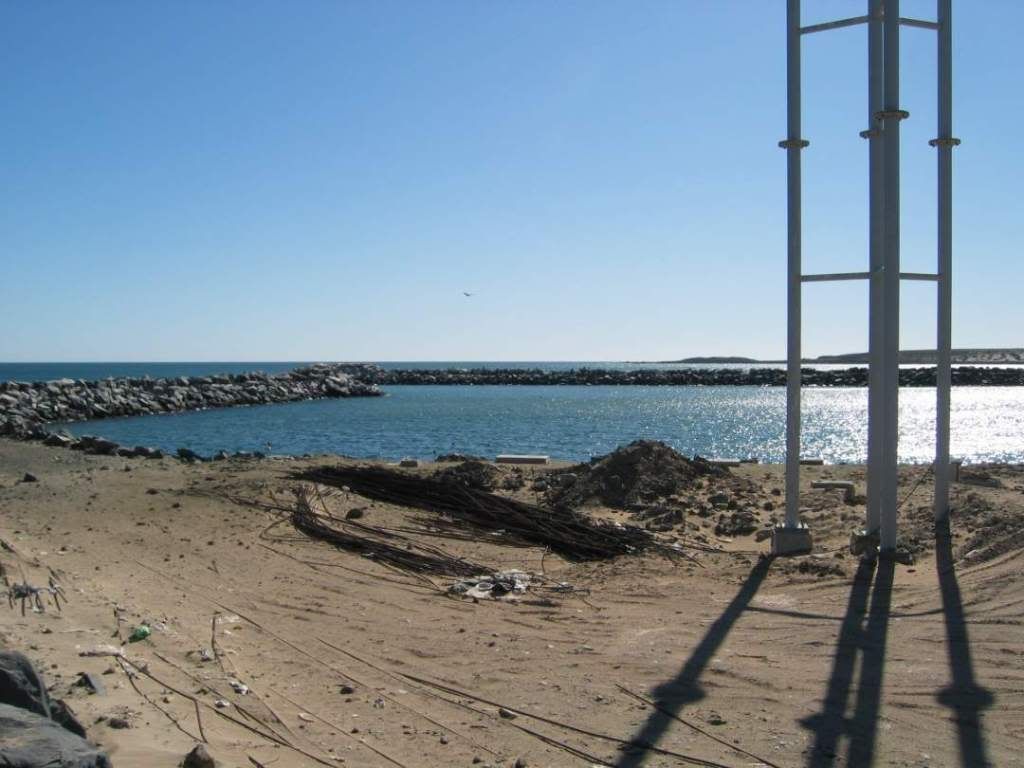
BajaNews - 6-9-2010 at 03:24 PM
http://www.miller-mccune.com/environment/the-ghost-harbor-at...
By Kristian Beadle
Location: At the beach in Punta San Andres, two hours south of Cataviña. Although the last 10 miles driving here were bumpy and dusty, the majority of
the road was freshly paved (and widened) to accommodate the influx of fancy yachts that would have been transported on the road across the peninsula.
Yachts … on a road? I also thought it was a strange idea.
Conditions: Our shack with three walls is remarkably good shelter from the buffeting wind outside, which is a sure sign of springtime. The Pacific
Ocean looks enticing and turquoise, but it is chilly — the cold California current is close to shore in this part of the peninsula.
Discussion: From the vantage point of a wood-trimmed office in Mexico City, the plan must have looked great. Like an arid Mediterranean dream: Modern
and sparkling marinas would line the coast of Baja, wealthy yacht owners would sip margaritas in picturesque towns that sprouted from fish camps. The
dream is part of the Escalera Nautica, a “stairway” network of harbors along the Mexico coastline, a mega-tourist project created by Fonatur, the
federal government developer that produced Cancún and Los Cabos. For now, the Baja stairway is missing a critical rung: The Santa Rosalillita harbor
is hibernating.
The goal was to entice American yachts to sail 300 miles south of San Diego to the new harbor in Santa Rosalillita, load their nice boats on a truck
and get dropped in the water again at Bahia de Los Angeles, a prime location for exploring the incredible Sea of Cortéz. Somewhere between the
recession and the sand that naturally fills the dormant harbor, the plans were shelved. The local town was disappointed, of course; they thought
they’d won the lottery by being a key spot for the Escalera Nautica.
However, some people are finding some peculiar silver linings in the clouds.
George, an American ex-pat and his wife, Sandra, live in the only house at Punta San Andres along the coast north of Santa Rosalillita in Mexico.
“It created a new spot,” I was told by George, an American ex-pat who with his wife, Sandra, lives in the one and only house at Punta San Andres, on
the lonely coast north of Santa Rosalillita. “A new surf spot, I mean. It’s the best thing that came out of that harbor.”
Surfers, not boaters, are now visiting the town to ride the newly formed wave created by the harbor’s unplanned sandbar — which brings the town a
meager trickle of tourism. Not exactly significant returns for the millions of pesos invested.
Even if the marina becomes functional in the future, water scarcity will likely continue to stunt growth in the area. George and Sandra said that
after being here five years, they saw rain for the first time this January. It filled their rainwater tank and lasted them three months.
Normally, they have to truck in water, since the wells in the area are too salty; they pay $1 for 30 gallons of fresh water (for washing) and $1.50
for 5 gallons of drinking water. Land speculators were trying to hype the situation by claiming that water could be piped from higher altitude wells —
until the marina folded and they walked away. That’s when another unforeseen source of income came into town: land acquisition by conservation groups.
Local ranchers and ejidos (community-owned and managed properties) who were salivating over possible land deals with developers are now talking to
conservation groups who have “cash on hand and are ready to deal,” WildCoast’s Zach Poppler told me when I met him at the group’s office in Ensenada.
He explained that the organization, which works to protect Baja’s last remaining wild coasts, wants to conserve the 70 miles north of Santa
Rosalillita, a coastline known as the Seven Sisters for its multiple headlands of good surfing and fishing. They have already acquired 14 miles of
this coastline, within the Valle de los Cirios protected area, and hope to double that next year.
“It’s a key opportunity right now. People are disillusioned with the promises of mega-tourism, and we can help them maintain their livelihood,”
explained Poppler. The group often purchases conservation easements, which means ranchers can continue to live and work on the land, with some
restrictions on further development.
According to experts such as professor Ileana Espejel Carbajal from the university in Ensenada, the protection of coastal ecosystems should be an
important element of climate adaptation. As the meeting place of the marine and terrestrial boundaries, the coastal zone fosters a huge array of
habitats — sand dunes, rocky bluffs, wetlands, tidal pools, reefs — which makes it popular for wildlife to feed and breed. Protecting this special
interface ensures the resilience of the whole regional ecosystem in adapting to climatic changes.
But coastal zones aren’t only popular with wildlife — they are a popular place for humans, their boats, and their condos. Who will end up with more
beachfront territory, humans or wildlife? For extremely dry places like the Valle de los Cirios coastline, wildlife will continue to be the stewards
for the foreseeable future.
woody with a view - 6-9-2010 at 04:44 PM
if you love baja you should send some money to Wildcoast and have them designate it for the Valle de los Cirios...
i am sending some $....
Baja&Back - 6-9-2010 at 05:45 PM
Ya, Fonatur blew it again by not spending a grand on a hydrologist to tell them about currents & sand drift.
The entire 100 foot boatlaunch is buried under sand and the boat lift is filled with sand.
Very depressing.
BMG - 6-9-2010 at 06:07 PM
November 2008 - working still going forward at that time.








vgabndo - 6-9-2010 at 09:27 PM
Wow that's as much water as I've ever seen inside that breakwater. Did they figure out how to keep the sand from collecting?
Skipjack Joe - 6-10-2010 at 10:00 AM
Now that it's a bust are there any plans to remove the boulders, rip out the road, and return things back to what it had been?
Anyone taking responsibility here for the destruction? 
At least BP is paying for it's mistakes.
Mexitron - 6-10-2010 at 11:12 AM
Wonder why they didn't just build the breakwater off the point, making a bigger harbor and possibly deflecting more sand.....mind you, I would rather
they didn't build anything at all, but just wondering...
woody with a view - 6-11-2010 at 12:10 PM
they seem to be moving forward, although slowly. conventional wisdom (in baja?) seems to say that when they are ready to bring in the first boat they
will install a longer rock jetty and dredge like a smuggler digging under the border fence.
it makes no sense to fight the sand while you're not open for bidniz.....
it is a beautiful site when the tides are right .....
.....
wilderone - 6-12-2010 at 06:57 AM
How big an operation could it ever be if there's no water? Need employees who know yachts, engines, carpenters, etc. New residents? Water? The should
just let the local fishermen use it; start a panga rental; campground. Good water skiing with your own boat. Sta. R has it's charms - but why keep
trying to put a square peg into a round hole.
woody with a view - 6-12-2010 at 07:36 AM
they have run electicity to the marina. why can't they run water from a well out in the mountains or a desal plant.
i hope they don't but there is too much $$$ involved to back out. it may come online and still NEVER see a paying customer.
surfer jim - 6-13-2010 at 08:01 AM
I think your last sentence is the correct answer.










 .....
.....